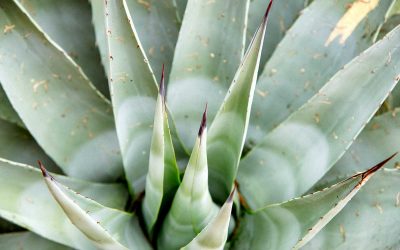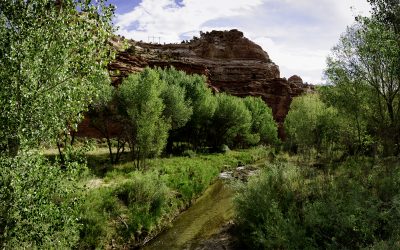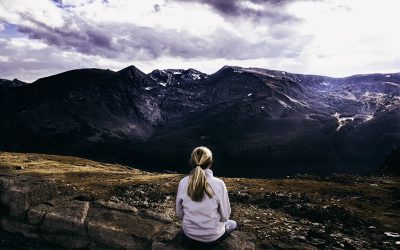The Mentor's Corner
Business and Marketing for ProsSEO IN THE AGE OF AI: CHANGES ARE COMING
Why SEO Is So Tough for Photographers
(And What to Do About It)
If you’re a photographer trying to get your website to rank on Google, you’ve probably noticed it’s a lot harder than it sounds. Your site might look gorgeous—full of stunning images, clean design, and minimal clutter—but when it comes to SEO, that “clean look” might be working against you.
The problem? Photography sites are typically visually rich and text-light. And that’s a real issue when you’re dealing with search engines that still rely heavily on text to understand what a page is about.
Let’s break it down.
The Limits of Alt Text and File Names
You’ve probably heard this advice before: add alt text to your images and use descriptive file names. That’s solid guidance, and it absolutely helps—just not as much as many photographers think.
Alt text serves two primary functions. It provides screen readers with a description of the image for accessibility, and it gives search engines a bit more context about the image content. Ideally, it should be under 125 characters, unique for each image, and written in a natural, keyword-friendly way—without stuffing.
Image file names are another basic SEO tool. Changing “IMG_2394.jpg” to something like “los-angeles-beach-elopement.jpg” gives Google a clearer idea of what your image depicts.
But here’s the kicker: even if you nail both alt text and file names, they’re just a sliver of the SEO pie. Alone, they won’t push your site anywhere near the top of search results.
Why That’s Not Enough
Google prioritizes textual content—especially when it comes to deciding what shows up in regular (not image-based) search results.
Alt text and file names can help your photos show up in Google Image Search, but they won’t do much to help your homepage, gallery pages, or portfolio land on the first page of a broader keyword search like “Scottsdale commercial photographer” or “New York food photographer.”
To rank well, Google wants context: keywords in headings, body copy, and metadata. It also takes into account how fast your site loads, whether it works well on mobile, how many people link to it, and how users interact with it.
SEO is holistic, and image optimization is just one small part of a much bigger strategy.
What You Should Be Doing
Here’s how to get smarter with your SEO without ruining the visual appeal of your site:
-
Write naturally descriptive alt text for every image—but keep it short, accurate, and unique.
-
Use meaningful image file names before uploading—no more IMG_1234s.
-
Add text content to your image pages. That could mean short captions, behind-the-scenes notes, or client testimonials. Bonus points for adding a few paragraphs that describe the shoot or what makes that kind of work your specialty.
-
Start blogging. Regular blog posts loaded with relevant keywords and real value help search engines understand your niche and keep visitors on your site longer.
-
Use proper headings and meta data. Your H1s, page titles, and meta descriptions should include target keywords you want to rank for.
Bottom line: Great photos alone won’t win the SEO game. But smart, strategic content alongside those photos? That’s where the magic happens.
Want to start optimizing your site the right way? Begin with your top gallery page—and add just 150 words. That tiny change might be the boost you’ve been missing.
Example Gallery Text for a Food Photographer
Sample Gallery Text Block: Commercial Food Photography
Welcome to my food photography gallery. I specialize in creating clean, appetizing images for restaurants, food brands, and editorial publications. My work focuses on natural light, fresh ingredients, and the kind of texture you can almost taste.
Whether it’s artisan bread, gourmet burgers, or minimalist product shots for packaged goods, each image is styled and lit to bring out the story behind the food. These photos have been used for menus, social media campaigns, magazine features, and web advertising.
Based in Phoenix, Arizona, I work with local and national clients who need polished, brand-ready imagery with fast turnaround and consistent quality.
Looking for a photographer who can make your food look as good as it tastes? Let’s talk.
Why it works:
-
Keywords appear naturally: “food photography,” “restaurants,” “packaged goods,” “Phoenix.”
-
Context is clear: It’s commercial food photography, not just random images.
-
Tone is friendly and human: Which is great for AI summarization and trust.
-
It invites engagement: With a soft call to action that fits the tone.
Example Gallery Text for a Product Photographer
Sample Gallery Text Block: Studio Product Photography
This gallery showcases my product photography work—clean, minimal, and focused on detail. I work with brands that need crisp, high-quality images for e-commerce, catalogs, packaging, and digital campaigns.
From skincare jars and fragrance bottles to tech gadgets and housewares, I photograph each item to highlight its design, texture, and function. Every shoot is styled and lit in the studio to ensure consistency across your product line and make your brand look its best.
I’m based in Phoenix, Arizona, and work with both local businesses and national brands. Whether you’re launching a new product or updating your online store, I deliver fast, polished visuals that help your products stand out in a crowded market.
If you’re looking for a reliable product photographer with a modern, detail-oriented style—let’s connect.
Now comes the next challenge: Being found in Chat.
Chat search is far different than SEO constructs.
How AI Search Works Differently
Unlike Google, which crawls and indexes pages based on algorithms focused on backlinks, metadata, and page structure, AI search engines pull information from a blend of real-time web data, structured knowledge, and user signals. They’re more conversational, they synthesize information, and they don’t rely on exact-match keywords the way traditional search does.
But they still need something to pull from. So your job is to make sure your content is:
Discoverable (meaning it’s online and accessible)
Structured (so it can be parsed)
Context-rich (so it can be summarized correctly)
Here’s how photographers can show up in tools like Perplexity and ChatGPT-powered search:
1. Publish Clear, Descriptive Content
AI tools thrive on context. If your website just says “Portfolio” or “Gallery,” that’s a missed opportunity. Instead, use descriptive headlines and subheadings like:
“Los Angeles Commercial Food Photographer Specializing in Editorial and Advertising Work”
That gives AI models something to latch onto.
2. Use Human-Friendly, Specific Language
Don’t just write for algorithms—write for readers. AI platforms are trained on natural language. That means they’re more likely to pull content that sounds helpful, conversational, and real.
So skip the jargon like “visual storyteller passionate about light and form” and get specific:
“I photograph modern, minimalist skincare products for health and wellness brands looking for clean, high-end imagery.”
3. Be Present on Platforms AI Crawls Often
AI tools like Perplexity and ChatGPT plug into real-time web sources, especially:
-
Substack
-
Medium
-
LinkedIn
-
Your own blog (with RSS feeds)
-
Portfolio platforms like Behance and Format
-
Credible directories like Google Business Profiles, Yelp, or Creative Directory sites
The more places you show up—especially those with public URLs—the more you’re part of the conversation.
4. Use Structured Data (Schema Markup)
This one’s more technical, but worth mentioning.
Structured data (like schema.org) tells machines what your page is about—whether it’s a product, an image, a portfolio, or a person. Use plugins (like RankMath or Yoast for WordPress) to implement it easily.
Adding schema like:
…helps AI identify you as a trusted entity.
5. Publish Frequently and Answer Questions
AI tools love up-to-date content. Posting regularly helps you stay relevant.
Also, consider writing short Q&A-style blog posts:
-
“What should you look for in a product photographer?”
-
“How much does commercial photography cost in Phoenix?”
These are the types of queries users type into Perplexity and GPT—and your content can be quoted directly.
Bottom Line
Photographers need to stop thinking only in terms of Google SEO. AI-powered search is the new frontier—and it’s context-driven, content-hungry, and lightning fast.
To show up, photographers need to:
-
Write like a real person.
-
Be specific and helpful.
-
Post in multiple places.
-
Keep content updated and accessible.
Recent Business Posts
PREPARING FOR CHANGES IN COMMERCIAL PHOTOGRAPHY
Preparing for Changes in Commerical Photography We have been experiencing the fastest rates of change in this industry that we have ever seen. It took nearly 9 years for Nikon to bring out the F4 after the F3 while today new bodies are almost an annual occurrence. We...
SEEK OPPORTUNITY, THE REWARDS WILL FOLLOW
SEEK OPPORTUNITY, THE REWARDS WILL FOLLOW I see it all the time. Discussion after discussion on how hard it is to find work, and how hard it is to get paid, and how hard it is doing hard stuff. OK. I get it. It’s hard. It is generally hard to do something that is so...
WHAT STOPS YOU FROM EXCELLING AT PHOTOGRAPHY?
What Stops You From Excelling at Photography? We all have crap that gets in our way. I have mine, you have yours. I have never met anyone who didn't have stuff that slowed them down, made them pause, or made them consider their worth. Never. And I have met some pretty...
IT’S A NUMBERS GAME (PART TWO)
It’s a numbers game… part two of our series. Find Part One here. Last time we discussed the numbers of getting people to see your work, and how that is so important to build a business. It’s been two weeks since that post. How many of you: Made the minimum...
DO YOU KNOW HOW TO PLAY THE “NUMBERS GAME”?
How to Play “The Numbers” Game: Part OneYou will find Part Two here.We have all heard the words, “It’s a numbers game” before. And most of us know what it means. In order to get to a certain level, more attempts than successes must be used.Selling door to...
ONE PHOTOGRAPHER’S STRUGGLE WITH THE “SLUMP”
I have been a photographer for nearly my whole life. I was probably 12 when my dad brought me into his darkroom to see the photographs we had taken that morning come to life under his little enlarger. I had never seen anything so magical, so mystifying, so utterly...
MEET CARMEN BLIKE, PHOTOGRAPHER, ANTIBES, FRANCE
Meet Carmen Blike, an expat American photographer living in Antibes, France. She is one of my students and is really rocking photography in her little town by the sea. Carmen is a hugely dedicated and committed photographer and rarely does she not have a shoot day...
HOW TO FIND WORK TODAY
I recently posted this article at Petapixel. It is a simplified system based on my course Find Photo Clients NOW which is not for sale at this time. This is not new stuff, and it is not rocket science either. It is hard work, laid out simply for you to start today....
HOW TO DEFEAT GRAVITY
HOW TO DEFEAT GRAVITY I was noticing something day before yesterday as I stopped in a little slot canyon in the Escalante to make a photo or two. What I did, something we all do all the time, made me stop and think about how we have learned since we were very small to...
WITH GREAT RESPONSIBILITY COMES GREAT POWER
The Power of Responsibility "With great power comes great responsibility"... known as the Peter Parker syndrome. Actually, it dates from around 1500 or so. And that statement has been a part of a lot of philosophies through the ages. However, I tend to reverse things...
SPEAKING WITH THE ASMP MEMBERS, MAY 20, 2020
Keeping Focus and Moving Toward a Post-COVID19 World with Don Giannatti I am honored to be speaking to the membership of ASMP about my ideas on moving forward away from this "lockdown". My focus is on what has remained and what has changed and utilizing our vision to...











